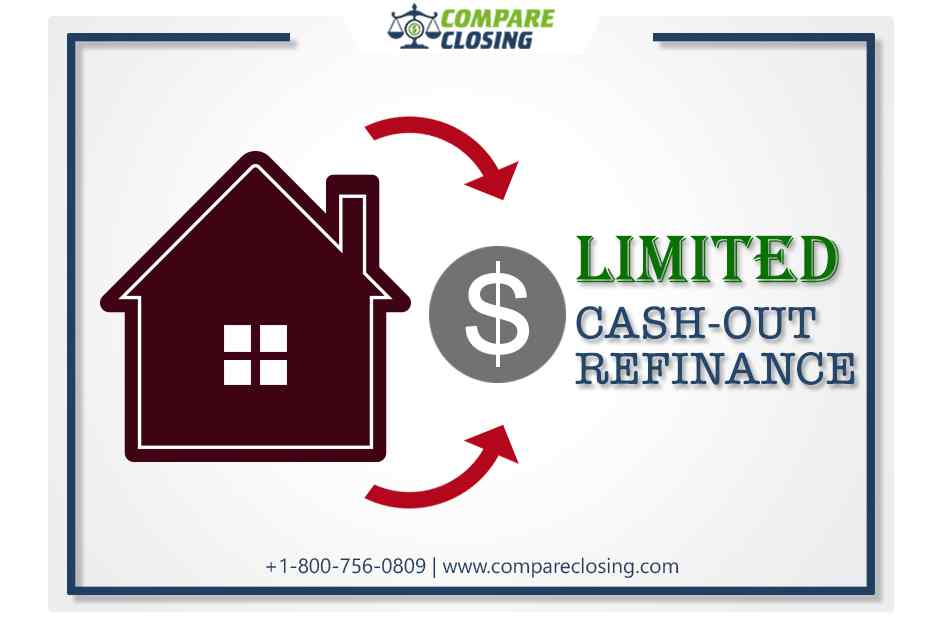Table of Contents
- What Are Netting Escrows & How Does It Work?: The Best Guide - January 2, 2024
- The Secret About Prescriptive Easement: Top Guide 1 Must Know - December 4, 2023
- About Home Equity Loans In Texas And How Can One Obtain It - November 27, 2023
About Limited Cash Out Refinance
If a borrower understands the loan operations, knows the terms and the primary elements of the process then they are more likely to qualify for a purchase or refinance a home loan.
A borrower’s ability to qualify for a loan is based on various factors that allow a lender to qualify for a maximum amount of the loan.
Factors such as the value of any loan, including the limited cash out refinance loan, are partly dependent on the cash the borrower has in hand for a down payment and closing costs, it also depends on the borrower’s loan-to-value ratio.
Out of several types of refinance loans, the limited cash out refinance home loan is one, and it’s a useful loan for a borrower who needs access to cash.
Interest Rates and Refinancing
Many homeowners search for a mortgage refinance option when there is a decrease in lending interest rates which will make more cash available to them on a monthly basis or allow the homeowner some other more favorable financing terms.
Everybody would prefer an option where they can take out a mortgage for a greater dollar amount than that which they already owe on their current mortgage.
However, sometimes because of their existing mortgage terms some homeowner’s eagerness to revise a mortgage loan’s terms can be hampered, for instance, the existing mortgage term might prohibit home refinancing.
The purpose of limited cash out refinance loan
The limited cash out refinance loan is an option for the homeowners to refinance their existing mortgage and replacing it with a new one.
This approach results in a new loan with a face value that’s greater than the amount that the borrower owes on their existing loan. But, this type of refinance loan allows the borrowers access to additional cash at the time of the refinance loan’s closure.
In general, a homeowner chooses the option of refinancing their home and replacing the existing mortgage with a new one to more favorable mortgage terms.
With a refinancing, they might reduce their mortgage interest rate and lower their monthly mortgage payment.
Alternatively, a homeowner might renegotiate the loan’s term or omit a property owner from the mortgage.
With a limited cash out refinance mortgage, the borrower may receive a small amount of cashback.
They will also refund any overpayment of fees and charges that are due to federal or state laws or regulations by the lenders.
Limited cash out refinance explained
If there is a considerable decline in interest rates or if a borrower experiences a financial downturn, like in the case of a health emergency then a cash-out refinance option is particularly beneficial
The eligibility to limited cash out refinance
To qualify for this refinance option, a homeowner must refer to their mortgage contract, which specifies when and on what basis the homeowner might refinance their current mortgage loan.
The homeowner’s refinancing options along with access to limited cash-out refinancing can be constricted due to these contractual terms, including those imposed by Fannie Mae.
How much would a limited cash out refinance cost?
If the borrower qualifies then the limited cash-out mortgage refinancing allows the homeowner access to cash, but they come along with fees and other costs. These costs consist of interest and closing fees.
The borrower receives cash, net of fees, and other costs, at the time of closing that they can use to pay down other debt or use to make other purchases
The process of limited cash out refinance
To get a cash-out to refinance a mortgage, the borrower needs to find a lender who is interested in issuing them a refinancing mortgage.
As soon as the borrower submits the loan application the lender evaluates the balance of the current mortgage, the term of the loan, the payoff value of the loan, and the borrower’s credit profile.
Based on the findings, the lender proposes to pay off the borrower’s current loan and provide a new one.
This offer will consist of a proposed monthly installment plan and the costs and fees related to paying off the existing mortgage and issuing a new one.
The existing mortgage might be paid depending on the loan-to-value ratio of the new loan, which could be 125 %, and the new loan’s list price could be equal to 125 % of the mortgaged home’s value.
A part of the difference between the mortgage payoff and the loan’s value is provided to the borrower in the form of cash.
Difference between a limited cash-out and no cash out refinance
Limited cash out refinance and no cash-out refinance may sound similar and could cover their purpose but they have different results.
A no cash-out refinance is a rate-and-term refi that leaves the borrower’s equity intact, but they need to pay for closing costs out of their pocket or roll them into their new loan while a limited cash-out refinance replaces their existing mortgage with a slightly larger loan and includes their refinancing costs.
If a borrower wants a small amount of cash-back and does not want to pay upfront closing costs they might consider limited cash out refinance.
But if they just want a better mortgage rate it would make more sense to choose a no cash-out refinance.
Conclusion
A limited cash out refinance replaces an existing mortgage with a new mortgage where the new loan amount is slightly larger.
This is because the refinancing costs are added to the balance instead of the borrower paying them out of pocket.
In a limited cash-out refinance all the costs of refinancing like the pay-off amount of the old mortgage, the title fees, the recording fees, and other closing fees along with escrow account shortage and unpaid property taxes are all rolled into the new mortgage.
So before opting for the refinance a borrower needs to identify what is their goal to refinance if it is to seek a larger loan amount and a part of it to be in cash then a limited cash-out refinance could be an ideal choice.
Amanda Byford
Amanda Byford has bought and sold many houses in the past fifteen years and is actively managing an income property portfolio consisting of multi-family properties. During the buying and selling of these properties, she has gone through several different mortgage loan transactions. This experience and knowledge have helped her develop an avenue to guide consumers to their best available option by comparing lenders through the Compare Closing business.





